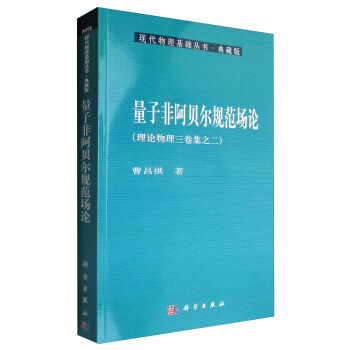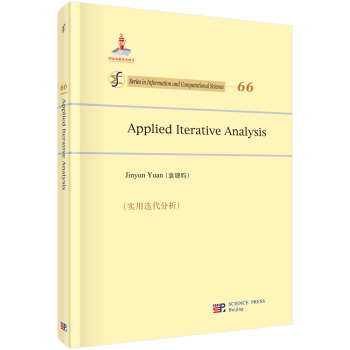

具体描述
内容简介
袁锦昀教授是杰出的旅居巴西华人1957年出生于江苏兴化唐刘镇,1977年考入南京工学院,巴西巴拉那联邦大学数学系终身教授、工业数学研究所所长,巴西计算和应用数学学会副会长,巴西数学会巴拉那州分会会长,巴西科技部基金委数学终审组应用数学和计算数学负责人,巴西巴拉那基金委数学终身组成员。 《实用迭代分析(英文版)(精)》是由其创作的英文版实用迭代分析专著。目录
Preface to the Series in Information and Computational SciencePreface
Chapter 1 Introduction
1.1 Background in linear algebra
1.1.1 Basic symbols, notations, and definitions
1.1.2 Vector norm
1.1.3 Matrix norm
1.1.4 Spectral radii
1.2 Spectral results of matrix
1.3 Special matrices
1.3.1 Reducible and irreducible matrices
1.3.2 Diagonally dominant matrices
1.3.3 Nonnegative matrices
1.3.4 p-cyclic matrices
1.3.5 Toeplitz, Hankel, Cauchy, Cauchy-like and Hessenberg matrices "
1.4 Matrix decomposition
1.4.1 LU decomposition
1.4.2 Singular value decomposition
1.4.3 Conjugate decomposition
1.4.4 QZ decomposition
1.4.5 S T decomposition
1.5 Exercises
Chapter 2 Basic Methods and Convergence
2.1 Basic concepts
2.2 The Jacobi method
2.3 The Gauss-Seidel method
2.4 The SOR method
2.5 M-matrices and splitting methods
2.5.1 M-matrix
2.5.2 Splitting methods
2.5.3 Comparison theorems
2.5.4 Multi-splitting methods
2.5.5 Generalized Ostrowski-Reich theorem
2.6 Error analysis of iterative methods
2.7 Iterative refinement
2.8 Exercises
Chapter 3 Non-stationary Methods
3.1 Conjugate gradient methods
3.1.1 Steepest descent method
3.1.2 Conjugate gradient method
3.1.3 Preconditioned conjugate gradient method
3.1.4 Generalized conjugate gradient method
3.1.5 Theoretical results on the conjugate gradient method
3.1.6 GeueuAzed poduct-tpe methods base u -QC
3.1.7 Inexact preconditioned conjugate gradient method
3.2 Lanczos method
3.3 GMRES method and QMR method
3.3.1 GMRES method
3.3.2 QMR method
3.3.3 Variants of the QMR method
3.4 Direct projection method
3.4.1 Theory of the direct projection method
3.4.2 Direct projection algorithms
3.5 Semi-conjugate direction method
3.5.1 Semi-conjugate vectors
3.5.2 Left conjugate direction method
3.5.3 One possible way to find left conjugate vector set
3.5.4 Remedy for breakdown
3.5.5 Relation with Gaussian elimination
3.6 Krylov subspace methods
3.7 Exercises
Chapter 4 Iterative Methods for Least Squares Problems
4.1 Introduction
4.2 Basic iterative methods
4.3 Block SOR methods
4.3.1 Block SOR algorithms
4.3.2 Convergence and optimal factors
4.3.3 Example
4.4 Preconditioned conjugate gradient methods
4.5 Generalized least squares problems
4.5.1 Block SOR methods
4.5.2 Preconditioned conjugate gradient method
4.5.3 Comparison
4.5.4 SOR-like methods
4.6 Rank deficient problems
4.6.1 Augmented system of normal equation
4.6.2 Block SOR algorithms
4.6.3 Convergence and optimal factor
4.6.4 Preconditioned conjugate gradient method
4.6.5 Comparison results
4.7 Exercises
Chapter 5 Preconditioners
5.1 LU decomposition and orthogonal transformations
5.1.1 Gilbert and Peierls algorithm for LU decomposition
5.1.2 Orthogonal transformations
5.2 Stationary preconditioners
5.2.1 Jacobi preconditioner
5.2.2 SSOR preconditioner
5.3 Incomplete factorization
5.3.1 Point incomplete factorization
5.3.2 Modified incomplete factorization
5.3.3 Block incomplete factorization
5.4 Diagonally dominant preconditioner
5.5 Preconditioner for least squares problems
5.5.1 Preconditioner by LU decomposition
5.5.2 Preconditioner by direct projection method
5.5.3 Preconditioner by QR decomposition
5.6 Exercises
Chapter 6 Singular Linear Systems
6.1 Introduction
6.2 Properties of singular systems
6.3 Splitting methods for singular systems
6.4 Nonstationary methods for Singular systems
6.4.1 symmetric and positive semidefinite systems
6.4.2 General systems
6.5 Exercises
Bibliography
Index
精彩书摘
Chapter 1Introduction
In this chapter, we first give an overview of relevant concepts and some basic results of matrix linear algebra. Materials contained here will be used throughout the book.
1.1 Background in linear algebra
1.1.1 Basic symbols, notations, and definitions
Let R be the set of real numbers; C,the set of complex numbers; and i 三 /^T. The symbol Rn denotes the set of real n-vectors and Cn, the set of complex n-vectors, a, /3, 7,etc., denote real numbers or constants. Vectors are almost always column vectors. We use Rmxn to denote the linear vector space of all m-by-n real matrices and Cmxn, the linear vector space of all m-by-n complex matrices. The symbol dimp) denotes the dimension of a linear vector space S.
The upper case letters A, B, C, A, A, etc., denote matrices and the lower case letters x, y, z, etc., denote vectors.
Let (A)ij = ctij denote the (i, j)th entry in a matrix A = (aij). For any n-by-n matrix, the indices j go through 1 to n usually but sometimes go through 0 to n — 1 for convenience. Let AT be the transpose of A; A*, the conjugate transpose of
A rank(yl), the rank of A and tr(A)三the trace of A. An n-by-n diagonal
matrix is denoted by
We use the notation In for the n-by-n identity matrix. When there is no ambiguity, we shall write it as I. The symbol ej denotes the jth unit vector, i.e., the jth column vector of I.
A matrix A G Rnxn is symmetric if AT = A, and skew-symmetric if AT = —A. A symmetric matrix A is positive definite (semidefinite) if xTAx > 00) for any
nonzero vector x G Rn. A matrix A G Cnxn is Hermitian if A* = A. A Hermitian matrix A is positive definite (semidefinite) if x*Ax ≥ 0( 0) for any nonzero vector
x e Cn.
A number A e C is an eigenvalue of A G Cnxn if there exists a nonzero vector x G Cn such that Ax = Xx, where x is called the eigenvector of A associated with A. It is well-known that the eigenvalues of all Hermitian matrices are real. Let Amin (A) and Amax(A) denote the smallest and largest eigenvalues of a Hermitian matrix A respectively. We use p(A) = max |Ai(A)| to denote the spectral radius of A where Ai(A) goes through the spectrum of A. Recall that the spectrum of A is the set of all the eigenvalues of A.
We use to denote a norm of vector or matrix. The symbols||oo denote the p-novm with p = 1,2, oo, respectively. Also we use ?a(A), which is defined by Ka(A) = ||A||a||A_1||a to denote the condition number of the matrix A. In general, we consider every norm at the definition when a is omitted. But most used norm is 2-norm.
We use and 1Z(A) to represent the null space and Image space (or Range)
of given matrix A respectively where = {x G Rn : Ax = 0} and 1^(A) = {y G
Rm : y = Ax for some x G Rn} and A G Rmxn.
For matrix iterative analysis, we need some tools, such as vector norms, matrix norms and their extensions, and spectral radii.
1.1.2 Vector norm
In fact, a norm is an extension of length of vector in R2 or absolute value in R. It is well-known that Vx G R, x = satisfies the following properties:
We generalize three properties above to vector space Rn as follows.
Definition 1.1.1 /i : Rn —j- R is a vector norm on Rn if
Example 1.1.1 There are three common norms on Rn defined by
There axe some important elementary consequences from Definition 1.1.1 of the vector norm.
Proposition 1.1.1
Proof
Then,
By interchanging x and y, we can obtain
The result of (1.1.1) follows from (1.1.3) and (1.1.4) together. We can prove (1.1.2) if y is replaced by —y in (1.1.1).
The 2-norm is the natural generalization of the Euclidean length of vector on R2 or R3 and called the Euclidean norm. The oo-norm also sometimes called the maximum norm or the Chebyshev norm. In fact, they are special cases of p-norm defined as ,
Sometimes, usual norm is not enough for our research. We have to construct a new norm. One useful technique to construct new norms from some well-known norm is given in the following theorem.
Theorem 1.1.2 Let v be a norm on Rm and A E Rmxn have linearly inde?pendent columns. Then /i(x) = u(Ax) : Rn is a norm on Rn.
The proof is easy, just to check properties of the norm in Definition 1.1.1. Leave it to reader. This technique can work for matrix norm in the next subsection.
Corollary 1.1.3 Let A G RnXn be symmetric and positive definite. Then, /i(x) = VxTAx is a norm on Rn? denoted ||尤||^4,and called weighted norm (with A). We have to know if the sequence generated by iterative methods converges to the solution when we study iterative methods. For this purpose, we shall give some concepts about limit of sequence in vector spaces.
Definition 1.1.2 Let {x(fc)} be a sequence of n-vectors,and x G Rn. Then, x is a limit of the sequence {x(fc)} (written x = limfc_,00 x^) if
where Xi(i = 1,2, … ,n) are components of x.
By the definition,
Furthermore, it follows from equivalence of vector norms that x = lim a;⑷ lim "(x — a:⑷)=0,
where " is a norm on Rn.
1.1.3 Matrix norm
Definition 1.1.3 : Rmxn — R is a matrix norm on Rmxn if
Example 1.1.2 Let A
前言/序言
用户评价
这本书给我的感觉,就像是一位经验丰富的导师,在我耳边循循善诱,一点点地揭示着产品迭代的奥秘。作者的写作风格非常细腻,他总是能够在我意想不到的地方,给出恰到好处的提示和引导。 我非常欣赏作者在书中对“用户为中心”的强调。他不仅仅是谈论技术,更是将用户的需求和体验放在了首位,并详细阐述了如何通过迭代来不断满足和超越用户的期望。这种人文关怀,让这本书在技术书籍中显得尤为独特。 让我印象深刻的是,作者在书中分享了许多关于“失败的迭代”的案例。他并没有回避这些负面经验,而是从中提炼出宝贵的教训,并将其转化为指导我们避免犯错的宝贵财富。这种坦诚和智慧,让我深受感动。 在阅读过程中,我常常会停下来,思考作者提出的每一个观点。他提出的问题,总能触及问题的本质,并引导我进行更深层次的思考。这是一种非常愉快的智力互动体验。 当然,这本书也并非一本“读完即懂”的书。作者在一些章节的论述,需要读者反复品味,才能真正领会其精髓。我个人在阅读过程中,也遇到了一些难以理解的地方,但这反而激发了我进一步学习和探索的动力。 总而言之,这本书是一次非常深刻的阅读体验。它不仅仅是一本关于“应用迭代”的书,更是一本关于“如何更好地做产品”的书。我强烈推荐给所有对产品开发有热情,并愿意不断学习和成长的读者。
评分这本书带给我的感觉,就像是收到了一份非常详尽的“产品经理的内心独白”。作者用一种非常个人化,但又逻辑清晰的方式,分享了他多年来在应用开发和迭代过程中的经验和思考。 我最喜欢的部分是作者对于“不确定性”的探讨。在当今快速变化的市场环境中,任何产品都很难预测未来的走向,而这本书恰恰提供了一种应对这种不确定性的框架。作者通过大量的案例,展示了如何在这种模糊性中找到方向,并做出有效的决策。 让我印象深刻的是,作者在书中反复强调“拥抱变化”的重要性。他并没有将迭代看作是一种不得不为之的负担,而是将其视为一种机遇,一种持续提升产品价值,并超越竞争对手的手段。这种积极的态度,极大地感染了我。 在阅读过程中,我经常会联想到自己过去的一些项目经历,并从中找到共鸣。作者提出的很多观点,都与我的实际工作经验不谋而合,这让我觉得这本书非常贴近实际,而且具有很高的参考价值。 然而,这本书的阅读门槛也不算低。作者在一些复杂的概念解释上,可能会让初学者感到一些困难。我建议读者在阅读之前,最好对应用开发和产品管理有一些基础的了解。但如果你能坚持下去,这本书一定会带给你意想不到的收获。 整体而言,这本书是一次非常棒的学习经历。它让我对“应用迭代”有了更全面,更深入的认识,并激发了我对未来产品开发的新思考。
评分这本书的阅读体验,就像是在一个巨大的“知识宝库”里进行一次精细的“寻宝”。作者以一种非常系统和严谨的方式,为我们构建了一个关于应用迭代的全面知识体系。 我特别欣赏作者在书中对“度量”和“反馈循环”的深入探讨。他清晰地阐述了如何在迭代过程中,通过科学的度量来评估效果,并利用反馈循环来不断优化产品。这对于任何想要构建高效迭代流程的人来说,都是至关重要的。 让我印象深刻的是,作者在书中展示了不同类型的迭代策略,并分析了它们各自的优缺点。他并没有推崇某一种单一的模式,而是鼓励读者根据实际情况,灵活运用不同的方法。这种务实和灵活的风格,让我觉得非常实用。 在阅读过程中,我常常会被作者的洞察力所折服。他总是能够看到事物发展的规律,并将其转化为清晰易懂的理论。这让我对“应用迭代”有了更清晰的认识,并对未来的产品规划有了更明确的方向。 然而,这本书的理论性较强,对于一些读者来说,可能会觉得稍显枯燥。我建议,在阅读本书的同时,可以结合一些实际的项目经验,这样会更容易理解和消化其中的内容。 总的来说,这本书是一次非常宝贵的学习经历。它为我提供了坚实的理论基础和实践指导,让我能够更自信地面对应用迭代的挑战。如果你是一位追求卓越的产品开发者,那么这本书绝对值得你认真研读。
评分这本书,我读完的时候,感觉就像走过了一个漫长而迷人的旅程。从最开始的“什么鬼?”到最后的“我好像明白了点什么”,这个过程充满了探索和顿悟。它不是那种能让你一目了然的书,相反,它像是一个精心布置的迷宫,你需要一步步去破解。 我特别喜欢作者处理概念的方式,不是那种生硬地抛出术语,而是通过各种生动形象的比喻和实际案例来解释。有时候,我甚至会停下来,在脑海里勾勒出他描述的场景,仿佛亲身经历了那些产品从概念到落地,又经历无数次修改的跌宕起伏。这种沉浸式的阅读体验,让原本可能枯燥的技术话题变得格外引人入胜。 当然,这本书的难度不小。有些章节,我需要反复阅读好几遍,甚至结合网上的资料和讨论,才能勉强跟上作者的思路。但我必须说,这种挑战是值得的。每一次克服了一个难点,都会有一种豁然开朗的感觉,仿佛又打开了一扇新的大门。它迫使我去思考,去质疑,去连接那些看似不相关的概念,这本身就是一种宝贵的学习过程。 让我印象深刻的是,作者在探讨“迭代”这个核心概念时,并没有局限于技术层面,而是将其延伸到了思维模式、团队协作,甚至是商业策略的层面。这种宏观的视角,让我对“应用迭代”的理解不再停留在写代码、改 bug 的浅层面上,而是上升到了一个战略性的高度。我开始思考,如何在我的工作和生活中,也能运用这种“小步快跑,持续优化”的思维方式,来应对不断变化的环境和挑战。 总的来说,这本书是一次非常充实且富有启发性的阅读体验。它不是一本可以让你轻松消遣的书,而是一本需要你投入时间、精力和思考的书。如果你是一个对产品开发、技术演进感兴趣,并且乐于接受挑战的读者,那么这本书绝对值得你拥有。它可能会让你感到困惑,但最终,它也会给你带来深刻的理解和全新的视角。
评分读完这本书,我有一种久违的充实感,仿佛经过了一场智力上的“马拉松”。作者的写作风格非常直接,不绕弯子,直击主题,虽然有时会让人觉得有点“硬”,但正是这种不加修饰的表达,反而让我更容易抓住核心信息。 这本书最大的特点在于其深度的分析能力。它不仅仅是告诉你“怎么做”,更重要的是解释“为什么这么做”,以及“这样做可能带来什么后果”。作者似乎将自己置于一个观察者的角度,冷静地剖析了应用在不同阶段所面临的挑战,以及相应的应对策略。这种审慎的态度,让我对“迭代”这个概念有了更深刻的理解,不再是简单地理解为“反复修改”。 在阅读过程中,我尤其欣赏作者在数据分析和用户反馈方面的论述。他不仅仅强调了收集数据的必要性,更重要的是教会读者如何有效地解读数据,以及如何将用户反馈转化为 actionable insights。这部分内容对我来说非常实用,也让我开始反思自己过去在产品开发过程中,可能存在的盲点。 尽管如此,这本书并非易于理解。作者在一些技术细节的描述上,可能会让非技术背景的读者感到吃力。我个人就需要在阅读某些章节时,时不时地停下来,查阅一些额外的资料,才能完全领会其意图。不过,这种挑战也恰恰是这本书的魅力所在,它鼓励读者主动去学习和探索。 总而言之,这本书是一本非常棒的“工具书”和“思想启迪书”。它适合那些希望深入理解应用迭代机制,并希望将这种知识应用于实际工作中的读者。如果你正在寻找一本能够挑战你的思维,并提供切实可行的指导的书,那么这本书绝对不会让你失望。
相关图书
本站所有内容均为互联网搜索引擎提供的公开搜索信息,本站不存储任何数据与内容,任何内容与数据均与本站无关,如有需要请联系相关搜索引擎包括但不限于百度,google,bing,sogou 等,本站所有链接都为正版商品购买链接。
© 2026 windowsfront.com All Rights Reserved. 静流书站 版权所有





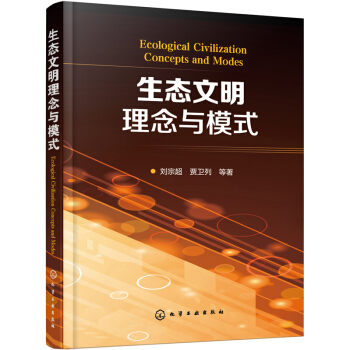

![临界波映射的集中紧性 [Concentration Compactness for Critical Wave Maps] pdf epub mobi 电子书 下载](https://pic.windowsfront.com/11730225/559f7348N9115ed34.jpg)
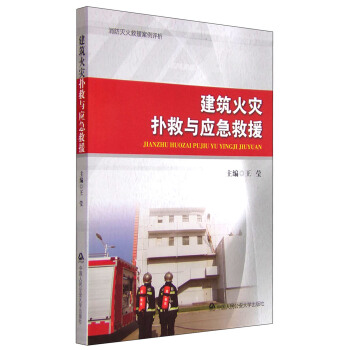
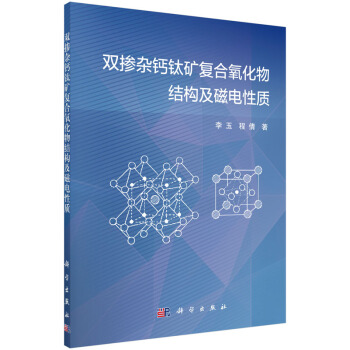




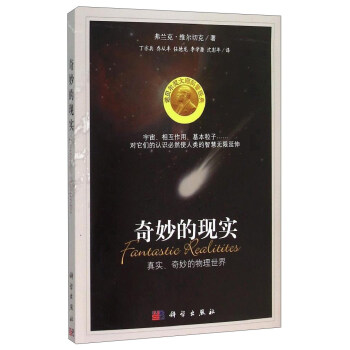
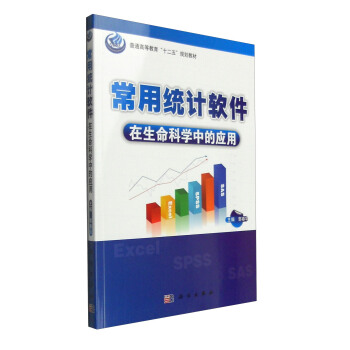


![区域CORS网数据处理方法及应用 [Data Processing Method and Applications of Regional CORS Network] pdf epub mobi 电子书 下载](https://pic.windowsfront.com/11974777/57e37a2cNcb45678f.jpg)

